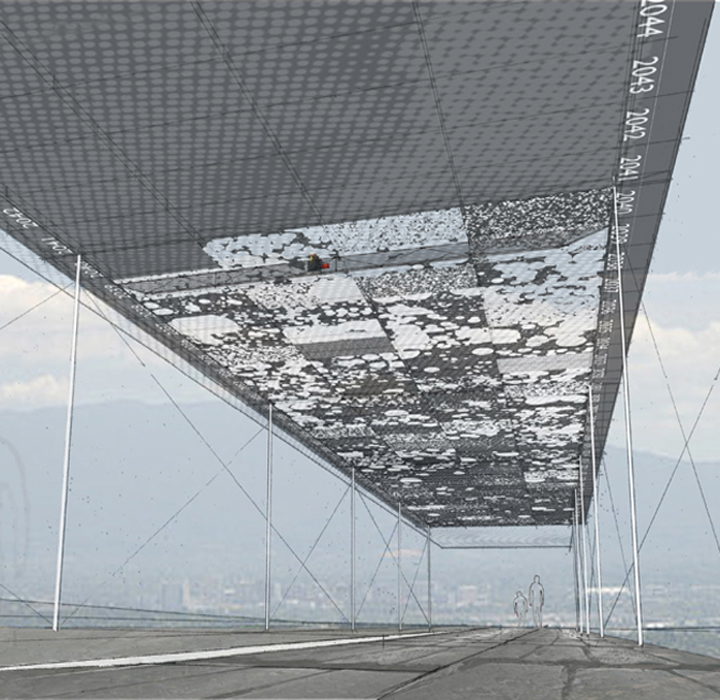
|
 |
 |
 |
 |
The Climate Clock Proposal, 2008
Finalist for 2008 climate clock competition, San Jose Public Art Commsion.
In collaboration with Beebe/Skidmoore Architecture
Artists' Proposal:
The San Jose Climate Clock (SJCC) is a groundbreaking public artwork which comes at a defining moment in human history. The world is awakening to the fact that human actions are dramatically affecting the environment and causing rapid climate change. The actions we take today to prevent climate change will be the defining historical events of our time. At the same time, technology and digital media are revolutionizing access to information, human communication, and creating radically new, time based art forms. The SJCC lies at the crux of these historical forces. It is a new type of public artwork which challenges artists to combine complex data and time-based digital media, with the tradition of permanent landmarks, memorials and site specific art, while motivating the public into positive action to prevent climate change.
Seen through this lens, our proposal is an evolving memorial with layers 3 elements:
1) A permanent, carbon-like, memorial material into which an algorithmically generated pattern based on the climate saving actions of the San Jose community over 100 years is etched.
2) A robotic etcher whose activity records and reflects the current positive actions of the community.
3) An addressable, netted LED array that displays predictions of the climate future based on the current actions of the community.
At the end of 100 years, a permanent memorial to actions of San Jose during this critical time will have been created.
This architecturally-scaled work takes the form of a canopy whose material seams create the grid of a 100 year calendar. Each block of the canopy grid represents one season or quarter. As the community takes positive action toward climate change, the dark, carbon-like material (made from recycled materials such as glass or rubber), is etched away from the canopy, revealing the sky above and allowing light to reach the ground below. The more action the community takes, the more dark material is removed, revealing more light. Small, individual actions take the form of small dots. Larger, community, technological and government actions take the form of large dots. Dots are then randomly placed with a Monte Carlo algorithm, creating a celestial effect. The future of the climate, based on quarterly actions, is predicted by the LED array layer, which displays a dynamic and impressionistic, cloud-like visualization. The more actions San Jose takes, the brighter the LED pattern and the less clouds. The robot and LEDs are powered by solar cells integrated into the canopy structure. On line, viewers can use a GUI version of the robot arm to scroll through each city’s clock, accessing the specific climate data and community actions of each quarter, and observing how the actions of each season predict a different future. An educational kiosk, located at the future end of the canopy, draws the viewer through the canopy and the covered park like space, and provides an opportunity to access the climate data on line.
|
 |
 |
 |